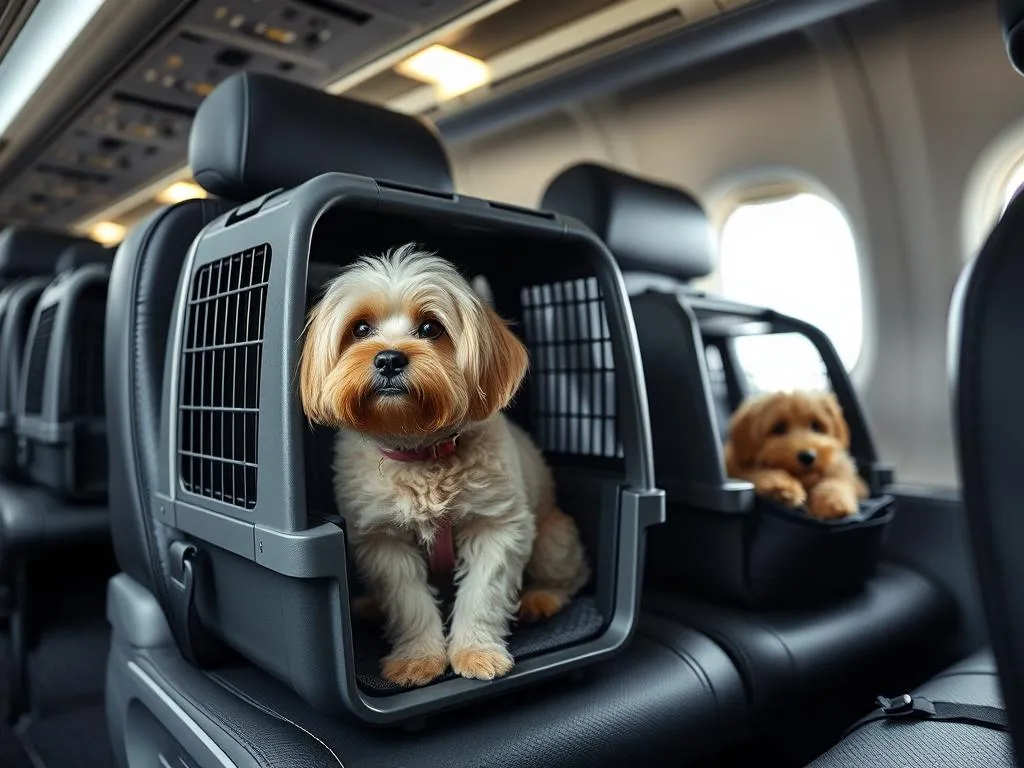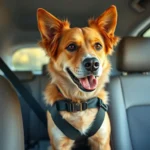
Traveling with your canine companion can be a joyful experience, but ensuring you have the right dog carrier for airplanes is crucial for a smooth journey. Many pet owners find themselves overwhelmed by the plethora of options available, as well as the regulations imposed by airlines. In this guide, we’ll break down everything you need to know about choosing the best carrier for your furry friend, from understanding airline regulations to tips for a stress-free travel experience.
Understanding Airline Regulations
General Airline Policies for Pet Travel
Every airline has its own set of rules when it comes to traveling with pets. Some airlines allow pets to travel in the cabin, while others may require them to go in the cargo hold. It’s essential to familiarize yourself with the policies of the airline you plan to use. Delta, American Airlines, and Southwest, for example, have specific guidelines regarding pet travel, including fees and reservation requirements.
Size and Weight Restrictions
Most airlines impose restrictions on the size and weight of cabin carriers. Typically, the combined weight of your pet and the carrier should not exceed 20 pounds, and the dimensions of the carrier usually need to fit under the seat in front of you. Common size limits range from 16 to 18 inches in length, 10 to 12 inches in width, and 10 to 12 inches in height. Always check the specific measurements for your airline to avoid last-minute surprises.
Approved Carrier Specifications
To ensure your pet can travel with you in the cabin, the carrier must meet certain specifications. Look for carriers that are well-ventilated, secure, and made from durable materials. Many airlines require carriers to have a waterproof bottom, as well as a sturdy zipper or locking mechanism to prevent escape.
Features to Consider When Choosing a Dog Carrier
Size and Fit
The first step in selecting the best dog carriers for airplanes is to measure your dog accurately. Use a tape measure to determine your dog’s length from the tip of the nose to the base of the tail and their height from the ground to the top of the shoulders. Choose a carrier that allows enough room for your dog to stand up, turn around, and lie down comfortably.
Comfort Features
When it comes to comfort, look for carriers with adequate padding and ventilation. Soft-sided carriers often come with removable, washable pads that provide a cozy resting place. Adequate ventilation is crucial for airflow; carriers should have mesh panels or vents to keep your dog cool during the flight.
Durability
Travel can be tough on pet carriers, so durability is a key factor. Opt for carriers made from high-quality materials that can withstand wear and tear. Reinforced seams and sturdy zippers are essential features that enhance the longevity and safety of the carrier.
Portability
Portability is another significant aspect to consider. Carriers with multiple carrying options, such as shoulder straps or handles, make transportation easier. Some models even come with wheels for seamless maneuvering through the airport. Additionally, consider collapsible carriers that can be stored easily when not in use.
Top Recommendations for Dog Carriers
Soft-Sided Carriers
Soft-sided carriers are generally preferred for air travel because they can easily fit under the seat in front of you. They are lightweight and often provide more comfort for your pet.
Product A: Petmate Sky Kennel
- Features: Durable construction, multiple ventilation windows, and a secure locking system.
- Pros: Airline-approved, ample space for movement.
- Cons: May be heavy for some pet owners.
Product B: Sherpa Travel Original Deluxe Pet Carrier
- Features: Soft sides, a cozy fleece lining, and mesh panels for ventilation.
- Pros: Foldable for easy storage, includes a carrying strap.
- Cons: Limited size options; check airline specifications before purchasing.
Hard-Sided Carriers
Hard-sided carriers offer enhanced security and protection, making them a good choice for larger dogs or those who may be more active.
Product C: Petmate Sky Kennel
- Features: Sturdy construction, ample ventilation, and secure latch.
- Pros: Approved for air travel, great for larger breeds.
- Cons: Bulky and heavier than soft-sided carriers.
Product D: AmazonBasics Soft-Sided Pet Carrier
- Features: Durable fabric, padded shoulder strap, and mesh windows.
- Pros: Affordable, lightweight, and easy to clean.
- Cons: Less rigid than hard-sided options; may not suit very energetic dogs.
Backpack Carriers
For adventurous pet owners, backpack carriers provide an innovative and practical solution for traveling with dogs.
Product E: Pawfect Pets Dog Carrier Backpack
- Features: Lightweight, breathable mesh, and adjustable straps.
- Pros: Allows hands-free travel, perfect for hiking or walking.
- Cons: May not fit all dog sizes comfortably; check weight limits.
Product F: PetAmi Deluxe Pet Carrier Backpack
- Features: Well-ventilated design, safety buckle, and storage pockets.
- Pros: Stylish and functional, suitable for small to medium dogs.
- Cons: Limited capacity for larger breeds; must ensure proper fit.
Tips for Traveling with Your Dog by Air
Preparing Your Dog for Air Travel
Before embarking on your journey, it’s essential to prepare your dog for air travel. Start by acclimatizing your pet to the carrier a few weeks prior to your trip. Allow them to explore the carrier, and reward them with treats when they enter it. Gradually increase the duration of time they spend inside, simulating the experience of being on a flight.
Packing Essentials
What you pack can significantly affect your dog’s comfort during the journey. Make sure to include the following items:
- Water bottle: Hydration is key, especially during travel.
- Travel bowl: A collapsible bowl makes feeding and watering your dog easy.
- Familiar items: Bring along a favorite toy or blanket to provide comfort.
- Documentation: Keep your dog’s health records and vaccination information handy.
Day of Travel Checklist
To ensure a seamless travel experience, create a checklist that includes:
- Confirming your flight and pet reservation.
- Double-checking carrier dimensions and airline requirements.
- Packing your dog’s essentials.
- Arriving at the airport early to allow enough time for check-in and security checks.
Common Challenges and Solutions
Dealing with Anxiety in Dogs
Air travel can be stressful for some dogs. If your pet tends to experience anxiety, consider the following strategies:
- Desensitization: Gradually expose your dog to the carrier and travel environments.
- Calming aids: Natural calming sprays or anxiety wraps can help soothe your pet.
- Frequent breaks: If traveling by car to the airport, stop frequently to allow your dog to stretch and relieve themselves.
Health and Safety Concerns
Before traveling, consult your veterinarian to ensure your dog is fit for air travel. Discuss any potential health issues, especially if your dog has pre-existing conditions. Ensure your dog is up-to-date on vaccinations, as some airlines may require proof.
Navigating Airport Security
Going through airport security can be a daunting experience. Here are a few tips to make the process smoother:
- Prepare your carrier for screening: Remove your dog from the carrier and carry them through the metal detector while placing the carrier on the conveyor belt.
- Stay calm: Your pet can sense your anxiety, so keeping a relaxed demeanor can help them feel at ease.
- Follow instructions: Be attentive to security personnel; they may have specific procedures for pets.
Conclusion
Choosing the best dog carriers for airplanes is not just about convenience; it’s about ensuring your pet’s comfort and safety during travel. Understanding airline regulations, selecting the right features, and preparing adequately can make all the difference in your travel experience. Traveling with your dog can be an enriching experience when you prioritize their well-being.
As you embark on your next adventure, remember that a little preparation goes a long way. Happy travels with your furry friend!









